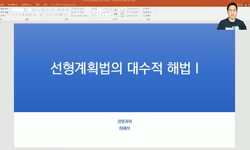Generally, the cleaning process in printed circuit board (PCB) manufacturing consists of prewash, wash, rinse, and drying stages. The prewash stage rinses off the gross contaminants from the board before the wash stage. In the wash stage, spray bar an...
http://chineseinput.net/에서 pinyin(병음)방식으로 중국어를 변환할 수 있습니다.
변환된 중국어를 복사하여 사용하시면 됩니다.
- 中文 을 입력하시려면 zhongwen을 입력하시고 space를누르시면됩니다.
- 北京 을 입력하시려면 beijing을 입력하시고 space를 누르시면 됩니다.
https://www.riss.kr/link?id=A104256619
- 저자
- 발행기관
- 학술지명
-
권호사항
-
-
발행연도
2013
-
작성언어
English
- 주제어
-
등재정보
KCI등재,SCIE
-
자료형태
학술저널
-
수록면
1213-1221(9쪽)
-
KCI 피인용횟수
9
- 제공처
-
0
상세조회 -
0
다운로드
부가정보
다국어 초록 (Multilingual Abstract)
Generally, the cleaning process in printed circuit board (PCB) manufacturing consists of prewash, wash, rinse, and drying stages.
The prewash stage rinses off the gross contaminants from the board before the wash stage. In the wash stage, spray bar and nozzle assembly is used to remove all remaining contaminants. An anti-dragout section exists between the wash and the rinse stages. The use of an air in this section helps prevent any liquid dragout from the wash to the rinse tank. Some cleaners also have a wet isolation that provides further rinsing off the wash water from the PCB. As the last stage of the cleaning process, at drying stage, high temperature and high pressure air is used to get rid of the remaining moist thoroughly. By the way, it is known that the dry process consumes a moderately large amount of electric power since high temperature and high pressure air are required in this stage.
However, if the due date of a certain PCB product is not too much tight, it would be not necessary to increase the temperature and pressure to proceed with drying. Thus, in this research, after collecting the experimental data and modeling the situations with appropriate statistical models, we develop a heuristic approach to the dry process in order to find optimal operating condition which minimizes the energy consumption while meeting the due dates of the ordered products as exactly as possible. Through the heuristic algorithm, that is, interchange-crossover algorithm, we provide an optimal (or near optimal) operating condition which can minimize both the total energy consumption and total penalty cost incurred by earliness and tardiness at the same time. The performance of the other approach is also investigated and compared to that of the developed heuristic approach.
참고문헌 (Reference)
1 Sviszt, O., "Typical features of printed circuit board production enterprise resource planning systems" 19-20, 2005
2 Pusavec, F., "Transitioning to sustainable production – Part I : application on machining technologies" 18 (18): 174-184, 2010
3 Crama, Y., "The Assembly of Printed Circuit Boards : A Case with Multiple Machines and Multiple Board Types" 98 (98): 457-472, 1997
4 Rajemi, M. F., "Sustainable machining : selection of optimum turning conditions based on minimum energy considerations" 18 (18): 1059-1065, 2010
5 Moyer, L. K., "Simultaneous Component Sequencing and feeder Assignment for High Speed Chip Shooter Machines" 6 (6): 271-305, 1996
6 Pinedo, M. L., "Scheduling: Theory, Algorithms and Systems, 3rd Ed." Springer 2008
7 Moyer, L. K., "SMT Feeder Slot Assignment for Predetermined Component Placement Paths" 6 (6): 173-192, 1996
8 Khandpur, R. S., "Printed Circuit Boards: Design, Fabrication, Assembly and Testing" McGraw-Hill 2005
9 Leung, J., "Optimal cyclic scheduling for printed circuit board production lines with multiple hoists and general processing sequence" 19 (19): 480-484, 2003
10 Luo, Z., "Modeling flank wear of carbide tool insert in metal cutting" 258 (258): 1235-1240, 2005
1 Sviszt, O., "Typical features of printed circuit board production enterprise resource planning systems" 19-20, 2005
2 Pusavec, F., "Transitioning to sustainable production – Part I : application on machining technologies" 18 (18): 174-184, 2010
3 Crama, Y., "The Assembly of Printed Circuit Boards : A Case with Multiple Machines and Multiple Board Types" 98 (98): 457-472, 1997
4 Rajemi, M. F., "Sustainable machining : selection of optimum turning conditions based on minimum energy considerations" 18 (18): 1059-1065, 2010
5 Moyer, L. K., "Simultaneous Component Sequencing and feeder Assignment for High Speed Chip Shooter Machines" 6 (6): 271-305, 1996
6 Pinedo, M. L., "Scheduling: Theory, Algorithms and Systems, 3rd Ed." Springer 2008
7 Moyer, L. K., "SMT Feeder Slot Assignment for Predetermined Component Placement Paths" 6 (6): 173-192, 1996
8 Khandpur, R. S., "Printed Circuit Boards: Design, Fabrication, Assembly and Testing" McGraw-Hill 2005
9 Leung, J., "Optimal cyclic scheduling for printed circuit board production lines with multiple hoists and general processing sequence" 19 (19): 480-484, 2003
10 Luo, Z., "Modeling flank wear of carbide tool insert in metal cutting" 258 (258): 1235-1240, 2005
11 Kanet, J. J., "Minimizing the average deviation of job completion times about a common due date" 28 (28): 643-651, 1981
12 Liow, J. L., "Mechanical micromachining: a sustainable microdevice manufacturing approach?" 17 (17): 662-667, 2009
13 Montgomery, D. C., "Introduction to Linear Regression Analysis" John Wiley & Sons 2001
14 Goosey, M., "Energy conservation and related best practices in printed circuit board (PCB) manufacturing" 36 (36): 38-42, 2010
15 Fernandez-Flores, O., "Design considerations of scheduling systems suitable for PCB manufacturing" 58 (58): 794-798, 2009
16 Jeswiet, J., "Carbon emissions and CESTM in manufacturing" 57 (57): 17-20, 2008
17 박유진, "Application of Heuristic Approaches to Minimization of Energy Consumption in Inner Layer Scrubbing Process in PCB Manufacturing" 한국정밀공학회 13 (13): 1059-1066, 2012
18 Alisantoso, D., "An immune algorithm approach to the scheduling of a flexible PCB flow shop" 22 (22): 819-827, 2003
19 Lee, G. C., "A dispatching rule-based approach to production scheduling in a printed circuit board manufacturing system" PALGRAVE PUBLISHERS LTD 54 (54): 1038-1049, 2003
동일학술지(권/호) 다른 논문
-
Development of a Concept to Optimize the Energy Efficiency in Forging Process Chains
- 한국정밀공학회
- Berend Denkena
- 2013
- KCI등재,SCIE
-
Hot-Stamping Die-Cooling System for Vehicle Door Beams
- 한국정밀공학회
- Zhong-de Shan
- 2013
- KCI등재,SCIE
-
Green Grinding with Innovative Wheel Topography
- 한국정밀공학회
- Taghi Tawakoli
- 2013
- KCI등재,SCIE
-
A Study on Stress Fields near V-notch Tip with End-hole under In-plane and Out-of-plane Conditions
- 한국정밀공학회
- 김진광
- 2013
- KCI등재,SCIE
분석정보
인용정보 인용지수 설명보기
학술지 이력
| 연월일 | 이력구분 | 이력상세 | 등재구분 |
|---|---|---|---|
| 2023 | 평가예정 | 해외DB학술지평가 신청대상 (해외등재 학술지 평가) | |
| 2020-01-01 | 평가 | 등재학술지 유지 (해외등재 학술지 평가) |  |
| 2011-01-01 | 평가 | 등재학술지 유지 (등재유지) |  |
| 2009-01-01 | 평가 | 등재학술지 유지 (등재유지) |  |
| 2008-06-23 | 학회명변경 | 영문명 : Korean Society Of Precision Engineering -> Korean Society for Precision Engineering |  |
| 2006-01-01 | 평가 | 등재학술지 선정 (등재후보2차) |  |
| 2005-05-30 | 학술지명변경 | 한글명 : 한국정밀공학회 영문논문집 -> International Journal of the Korean of Precision Engineering |  |
| 2005-05-30 | 학술지명변경 | 한글명 : International Journal of the Korean of Precision Engineering -> International Journal of Precision Engineering and Manufacturing외국어명 : International Journal of the Korean of Precision Engineering -> International Journal of Precision Engineering and Manufacturing |  |
| 2005-01-01 | 평가 | 등재후보 1차 PASS (등재후보1차) |  |
| 2003-07-01 | 평가 | 등재후보학술지 선정 (신규평가) |  |
학술지 인용정보
| 기준연도 | WOS-KCI 통합IF(2년) | KCIF(2년) | KCIF(3년) |
|---|---|---|---|
| 2016 | 1.38 | 0.71 | 1.08 |
| KCIF(4년) | KCIF(5년) | 중심성지수(3년) | 즉시성지수 |
| 0.92 | 0.85 | 0.583 | 0.11 |





 KCI
KCI






